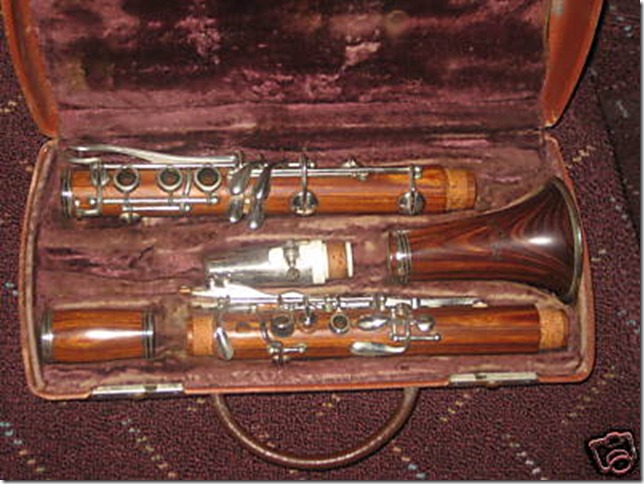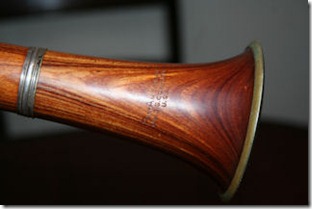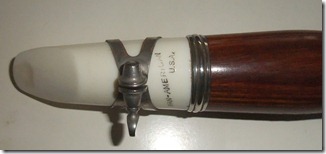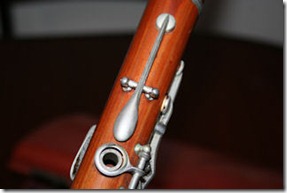Pan American Propeller Wood Clarinet
This striking Pan American “Violin Finish” clarinet (made by Conn) was mistakenly described on eBay as made from pear wood. It is more commonly known as a propeller wood clarinet. This particular instrument was dirt cheap and at this point unplayable without an overhaul.
This instrument was an ingenious solution by Conn to the scarcity of Grenadilla wood during the Second World War. Unsubstantiated sources say the same wood was used in the manufacture of WWII B24 Liberator Bomber Propellers’, hence the nick name; “Propeller wood clarinet”. That has since be debunked. They came in plastic or Cocobolo plywood.
Bill Hausmann says this about the instrument in the Klarinet Archive:
“I believe, Conn began manufacturing clarinets out of laminated wood (essentially thick plywood, similar to what is used to manufacture wooden aircraft propellers) to be sold under their cheaper Pan-American brand. The main idea was to create a clarinet which would not crack. When the laminated billets were turned on the lathes to produce clarinet bodies, a very beautiful false grain pattern was revealed. Since the laminated wood did not take stain well, the clarinets were left unstained and this, coupled with the very bold and symmetrical grain pattern, made these strikingly beautiful instruments.
While they do resist cracking very well, a bad batch of wood caused some of these clarinets to de-laminate, which ruined their reputation and production ended after just a few years. Officially called “violin finish,” these clarinets are not particularly good players, but are in high demand on eBay, etc., just for their looks.
I think the tone hole inserts were pretty much necessary on these models because the laminated wood would likely chip apart if they attempted to do the fine cutting necessary to make integral tone holes.”
This instrument is indeed a student quality instrument. The original mouthpiece was done in white acrylic.
The Pan American “Violin Finish” Clarinet according to the brochures, flyers and price lists was a light-colored violin finish for wood clarinets. They first popped up in the Spring of 1950 and the last mention of it was in January 18, 1954. The National Music Museum in South Dakota list these references for the clarinet model:
- Pan American “The Baton” Newsletter in Spring 1950 lists the “Violin Finish” Clarinet Model 68N for $120.00.
- It was listed as a new item in the C. G. Conn, Ltd. Annual Report to Stockholders for the year ending April 30, 1950.
- It was mentioned in the December 1951, June 8, 1953 and January 18, 1954 Conn price lists.






